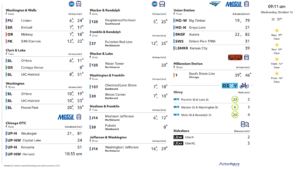The way we’ve worked has changed. Having face time with an employee or coworker quite literally means meeting with them on FaceTime. Commuting means walking from your bedroom to your makeshift office or desk. But with the vaccine rolling out, there is a light at the end of the work-from-home tunnel.

With anticipation of returning to the office building, lots of your employees will feel compelled to return as soon as possible. In fact, only 12% of employees said they plan to work from home full time once their company returns, according to a Gensler study.
Unfortunately, not everyone will be able to immediately return in the capacity they were once used to. This could be due to safety concerns, local regulations, or a combination of both. Whatever circumstances are at play, you will need to work to manage their expectations upon returning will keep them safe, as well as productive.
Communication
We recently wrote a blog about how COVID has changed the employee experience. The way employees work and their associated expectations have expanded beyond just in-office operations. There will be more permanent work-from-home schedules employers will need to accommodate, in addition to rebuilding commute programs which have been essentially forgotten about.
With the changes to your employees’ work lives, there could be confusion around where, when, and how they can both get to and interact with the office. First, you need to create a culture based on transparency. Not just between management and employees, but between employees as well.
For employees to return safely, you need to keep them informed of how in-office operations will be handled. That means you need to communicate everything that is going on. Sounds easy right? Well right now, only 42% of employees say their employers are doing a good job of communicating overall. We’re not saying you’re in that group, but you need to bear in mind that your employees want to come back to the office. It’s up to you to communicate with them how to do so safely and to what capacity.
The next is setting up a clear and effective system of communication between teams and team members. For those who have been working from home, communicating has become almost completely virtual. Either through Slack, Zoom, texting, or even a combination of all of the above. When we get back, employees will be eager to make up for lost face-to-face interactions. While that’s great, not every employee on every team will be in the office on the same day, or at the same time.
You need to strongly encourage employees to continue to use digital tools so no one becomes left out of conversations that happen in the office. This also means making sure your leadership team(s) is on the same page. Instructions, emails, and memos can plant the seed, but your team leaders are the ones in the daily conversations with employees and need to set the expectations and model this behavior.
Office capacity
You also need to figure out the daily capacity of the office on a day-to-day and hour-to-hour basis. You can’t build a complete return-to-the-office plan if you don’t know what a safe capacity for your situation is. Like we said above, a majority of employees will want to come into the office multiple times per week. But, if it’s not safe or there isn’t space open every day, you need to make this crystal clear.
In-office safety is going to be critical in the beginning, and probably for an entire year. You need to make it known that only X% of the office can be occupied at any one time, and it has to be set before employees begin to return. You can’t just say all are welcome back, and then start pumping the breaks after the fact.
Ensuring office safety will come with an effective scheduling system. Just like making a dinner reservation, employees will probably need to reserve their place in the office. This can either be through existing workplace software or an internal scheduling system.
Workplace operations
From what we’ve been reading and hearing lately, office spaces will serve different purposes than they did before COVID. Before, employees would come every day and work on individual tasks and take meetings. Now, the expectation is that employees will keep their more labor-intensive, focused tasks for home, and instead base their time in the office more around collaborative meetings and light personal work.
If you go in the direction of a collaborative office structure, and make changes based on that direction, you need to let your employees know. If there won’t be assigned personal workspaces anymore, employees need to know they will need to bring items with them daily. Setting the expectation of: you can come work in the office, but it won’t be exactly the same as it was pre-COVID will help you manage your daily capacity and office safety.
Changes to commuting
When it comes to commuting you need to help your employees relearn and reacquaint themselves with commuting again. That means assisting them with re-enrolling in the benefits program or learning a new method of commuting. One major expectation you need to set is around parking.
With a lower office capacity and modified employee schedules, your parking needs have more than likely changed – maybe not for the better. With few employees in the office at once, that could mean more parking spots available, which could be tempting to some employees.
It’s important to inform your employees of your parking policy and supply. If you didn’t increase the amount of parking, or even decreased the amount of spots you occupy, you need to make that known. You want to continue to encourage sustainable commuting, even if driving seems like that more desirable option.
If your parking policy or supply has changed, then you will really need to assist your employees with new methods of commuting. Fortunately, we have written an ebook about building a commute management strategy based on company size. And if you also need help with your return-to-the-office plan, check out our return-to-the-office toolkit.




